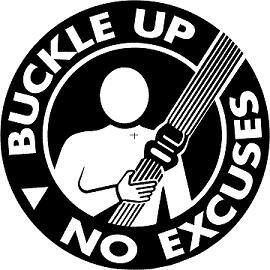Seat Belts Save Lives

By drivers operating your trucks and NOT wearing a seat belt they are providing an unnecessary risk that you do NOT need! In addition, if you take a look at these violations in states that have a not wearing a seat belt is a primary offense it is the catalyst for a roadside inspection going beyond just a seat belt violation.
Tips for increased seat belt usage:
- A company policy stating that the seat belt is to be worn in all company vehicles at all times while the vehicle is in motion.
- Defined disciplinary action in your company policy to be taken when a driver receives a seat belt violation.
- When ordering your trucks specify them with bright orange or yellow seat belts for better belt visibility.
- Consider providing having a company seat belt life insurance policy for drivers as an incentive for them to wear their seat belt.The policy would pay the driver’s beneficiary if they are killed in an accident while driving your truck and wearing the seat belt.
1/3 of the 635 truck occupants who died in accidents during 2011 were not wearing a seat belt, according to a Federal Motor Carrier Safety Administration analysis released last week. In a 2010 FMCSA analysis of seat belt usage the overall safety belt usage rate for drivers of all medium and heavy duty trucks and buses rose from 74% in 2009 to 78% in 2010. The usage rate for CMV other occupants also increased from 61% in 2009 to 64 percent in 2010. Safety belt usage among CMV drivers has steadily increased from 65% in 2007 to 72% in 2008 and 74% in 2009. This 2010 survey result represents a 20% increase in safety belt usage compared to 2007 survey results.
A total of 26,830 CMVs, 26,830 drivers, and 1,929 other occupants were observed at 998 sites. Safety belt use was observed to be higher in states governed by primary belt use laws (80%) than secondary belt use laws (72%). Safety belt usage among drivers and other occupants in units identified as part of a fleet (80%) was also observed to be higher than independent owner-operators (71%). These estimates show an increase from 2009. Observations on the use of safety belts were conducted on a sample of arterial roads and limited access highways by trained data collectors and the data collection protocol remained the same as last year. All data were collected on Personal Digital Assistants (PDAs) utilizing a customized data collection program.






